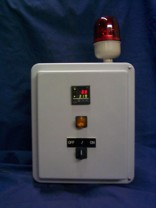Zero Firing and Phase Angle Firing
Solid State AC switching Controls vary according to how and when the SCR gates are triggered.
The SCR Gate is triggered by a Firing pulse. The firing pulse turned on and off by a
manual potentiometer, instrument Controller, milliamp signal or On/Off control voltage. For
proportional control of resistance heating loads, there are two (2) types of SCR firing methods available.
Zero Firing
Zero Firing is a method of proportional voltage control in which the SCRs are fired only when the voltage wave form
crosses the zero voltage level at half cycles. Zero fired power controls are useful when radio frequency interference
(RFI) and line voltage distortions characteristic of phase angle power controls must be avoided.
Within a given time base the trigger circuit will energize the SCR gate for a certain number of cycles and then the trigger circuit
will withdraw the pulse from the gate for a number of cycles. Power is regulated to the load
by the ratio of the number of cycles ON to the number of cycles OFF over the given time period (t)

Phase Angle Firing
Phase Angle Fired controls vary the voltage to the load by controlling the point within each 1/2 cycle phase angle at which
the trigger pulse is applied to the SCRs - hence the name phase angle controlled. This method provides
infinitely variable AC voltage Control.
The result is that only a part of each cycle is ON and the remaining part of the cycle is OFF providing porportional RMS
voltage control. This method provides a finer resolution AC power control, but can generate RFI and Line voltage distortions.

|
| | | |
We've seen your application. Call Us for application Assistance
(901) 452-4516




